|
Hanway Street, London W1
A little known historic street off Oxford Street
(Photos © urban75, Feb 2008)
Connecting the busy thoroughfares of Oxford Street and Tottenham Court Road is the ancient lane of Hanway Street, boasting a recorded history going back to the time of Henry 8th.
Pretty much fully developed by the 1740s, the street was first known as Hanover Yard, before becoming Hanway Yard before eventually settling on Hanway Street, rumoured to be in honour of Jonas Hanway (see below).
The area was closely associated with coaching inns which developed close to the busy crossroads.
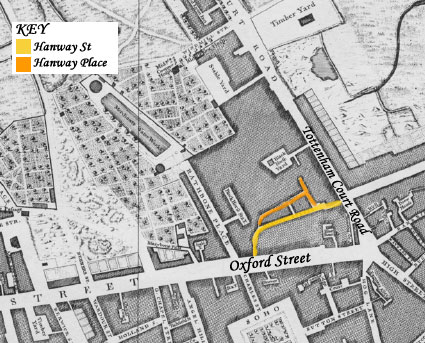
Detail from John Roque's 'Plan of the Cities of London & Westminster, 1746'.
Although extensive rebuilding took place between c.1850 and 1920, Hanway Street retains its selection of small shops, semi-industrial Victorian buildings and modest housing.
Now a small conservation area (designated 1990), the street offers an unexpected break from all the frenzied shopping and street activity nearby, with the narrow, curving lane peppered with independent stores including two record stores, a bar, a DJ store, hair salon and a jewellers.

Jonas Hanway
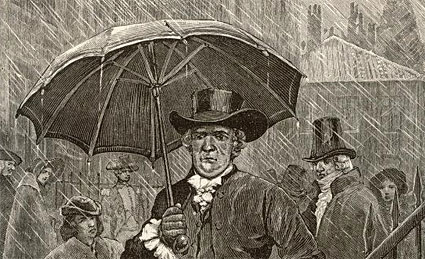
The street is said to be named after the Portsmouth-born traveller, philanthropist and eccentric, Jonas Hanway (1712- 1786), who - amongst his many achievements good and bad - founded The Marine Society in 1756, became governor of the Foundling Hospital two years later and then went on to help establish the Magdalen Hospital.
Hanway is perhaps more well known for being the first Londoner to carry an umbrella, braving ridicule and scorn from hackney coachmen who tried to 'hoot and hustle him down'.
Here's how a report in  'Old and New London: Volume 4 (1878)' described his plight: 'Old and New London: Volume 4 (1878)' described his plight:
 In respect to his courage and perseverance in bringing umbrellas into general use, Hanway was a greater benefactor than at first might be supposed. Gay's poem of "Trivia," it is true, commemorates the earlier use of an umbrella by poor women, "tuck'dup-sempstresses" and "walking maids;" but even with this class it was a winter privilege, and woe to the woman of a better sort, or to the man, whether rich or poor, who dared at any time so to invade the rights of coachmen and chairmen.
In respect to his courage and perseverance in bringing umbrellas into general use, Hanway was a greater benefactor than at first might be supposed. Gay's poem of "Trivia," it is true, commemorates the earlier use of an umbrella by poor women, "tuck'dup-sempstresses" and "walking maids;" but even with this class it was a winter privilege, and woe to the woman of a better sort, or to the man, whether rich or poor, who dared at any time so to invade the rights of coachmen and chairmen.
But Hanway steadily underwent all the staring, laughing, jeering, hooting, and bullying; and having punished some insolent knaves who struck him with their whips as well as their tongues, he finally succeeded in overcoming the prejudices against it. Jonas made a less successful move when he tried to write down the use of tea.
According to The Smoke Magazine (#11), Hanway gained further notoriety by proposing the use of stilts as a way of sidestepping the muck and grime that covered 18th century city streets.
Although he failed to popularise stilts in the same manner as umbrellas, such was his enthusiasm for walking tall that he insisted in being buried with his stilts on, with the body resting in an "elaborate tomb in the church of St Mary, Hanwell, crowned with a magnificent stone umbrella and containing room for his extra long coffin."
At least that's what The Smoke said.

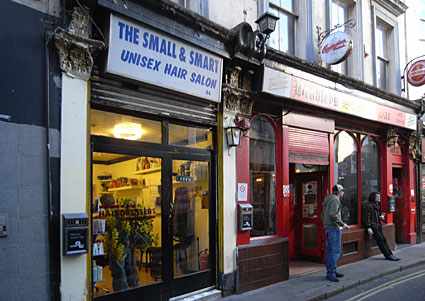
A short way into Hanley Street from the western entrance off Oxford Street is the 'Small and Smart' hair salon and Bradley's Spanish Bar. Just out of picture is Oxford Jewellers.
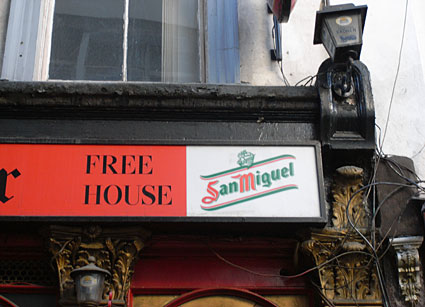
Detail from the sign above Bradley's Spanish Bar. The bar is well worth a visit - it's one of our favourite West End boozers and you can usually find some interesting people enjoyung a drink or two.
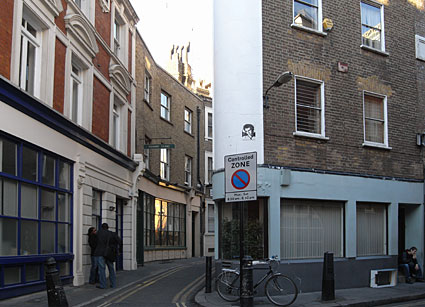
Hanway Place veers off to the left and rejoins Hanway Street close to its junction with Tottenham Court Road.
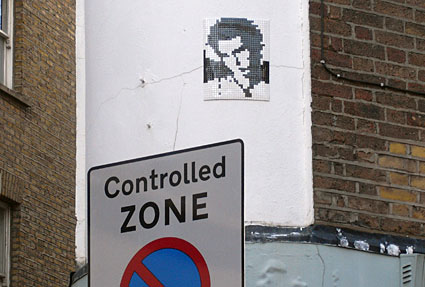
Neat and unexpected Sid Vicious mosaic, Hanley Street.
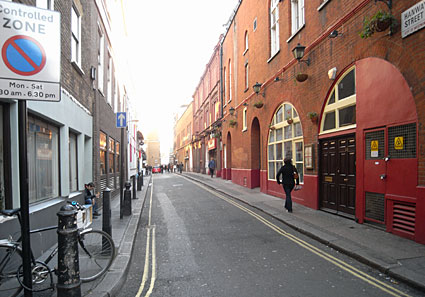
Looking east along Hanway Street.

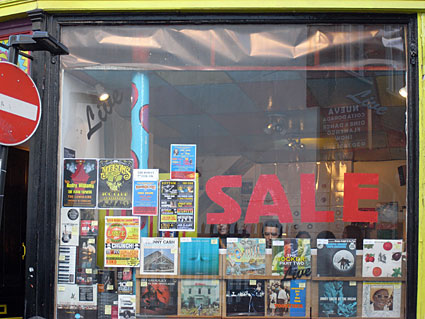
JB's second hand record store at 36 Hanway Street.
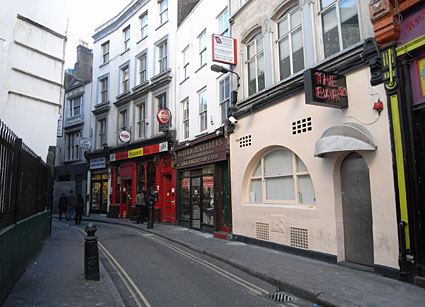
Looking west along Hanway Street towards the road curving left towards the junction with Oxford Street. Nearest to the camera you can see a sign for 'The Bar' a tiny little bar/club downstairs where we've enjoyed some fine nights.
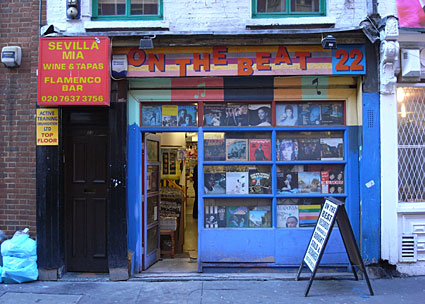
On The Beat second hand record store, 22 Hanway Street.
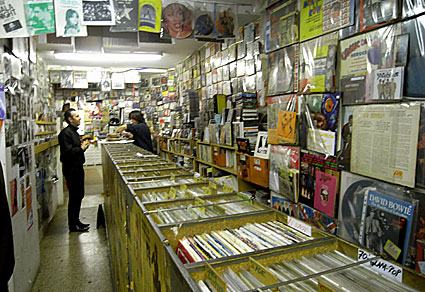
There's loads of old vinyl to be found inside.
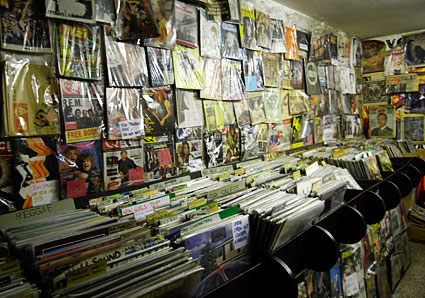
The back room at On The Beat records.

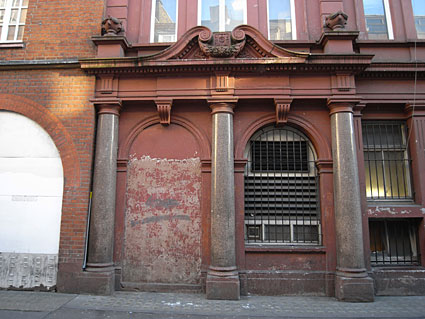
The elaborate facades of former entrances to stores facing on to Oxford Street.
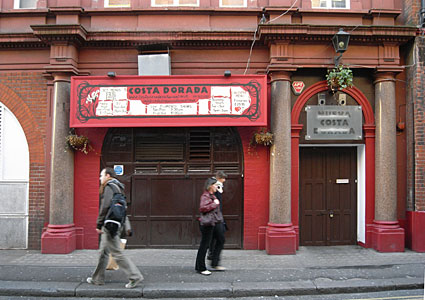
The west side of the building, now being used by Costa Dorada restaurant (with 'live flamenco shows' from 9.30pm nightly).
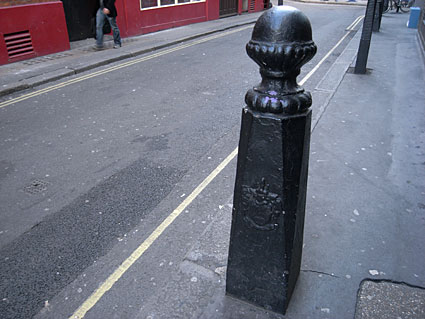
Historic - and listed - boundary markers for the Parish of St Marylebone. Almost lost under countless layers of paint is the coat of arms.
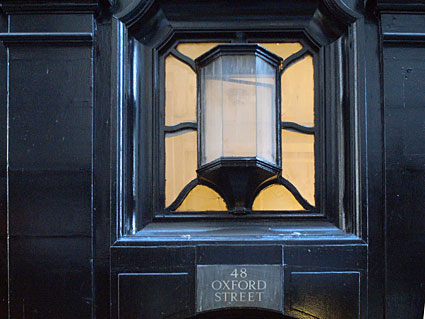
An attractive doorway at the eastern end of Hanway Street, leading to 48 Oxford Street.
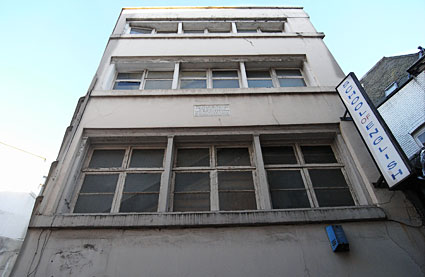
Right next door is the Central School of English, 16, Hanway Street.

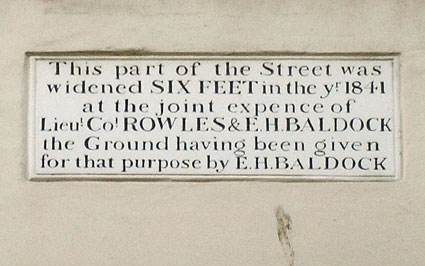
Plaque displayed between the second and third floors of the building.
Transferred from an earlier building on the site, the plaque informs passers by that the road was widened in 1841, with an E.H. Baldock donating the land.
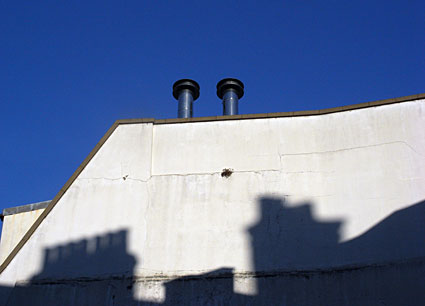
Looking up from the eastern end of Hanway Street.
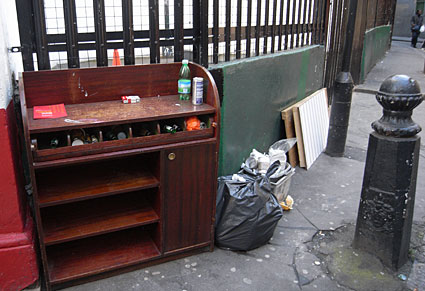
Discarded desk, seemingly used as an impromptu bar table.

« back to homepage Hanway Place »
|

